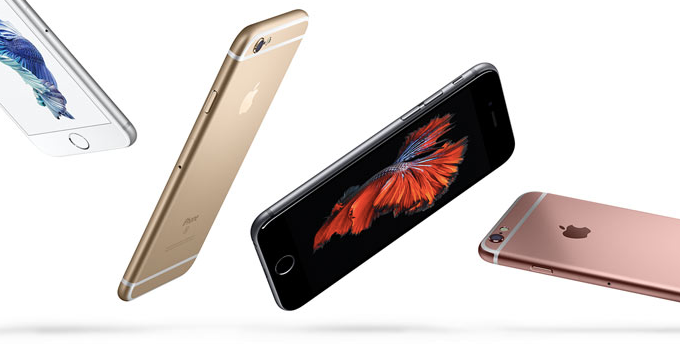iPhone 6s teardown results: Apple A9 is a dual-core chip, new 6-cluster GPU, more cache

The Apple iPhone 6s family is already available in the United States and the majority of Western markets, but while the phones are out there, some particularities including essential parts of their hardware remain a mystery.
We know that the new iPhone 6s series is powered by the brand new Apple A9 system chip, but that's about all the detail Apple officially provides. The company has not declared how many cores are in the CPU, what clocks it runs on, what's the GPU, and none of those technical details, instead focusing on the actual functionality and user experience.
Nonetheless, software and UI are just one part of an equation that requires the proper hardware to run at an optimally fast speed.
That's why we're particularly happy to see the chip wizards from Chipworks get their sophisticated x-ray gear and give us the first look at the scheme of Apple's A9 system chip along with some sorely missing details.
Apple A9 comes with a dual-core CPU and a new, 6-cluster GPU
First, let's say that iFixit's teardown has already confirmed a couple of important details, including the size of the RAM memory in the iPhone 6s - it's now finally 2GB. Chipworks reveals one more thing about the RAM in the iPhone 6s: it comes from at least two sources, Hynix in some units (Chipworks') and Toshiba (in iFixit's).The most important details, however, come from the image of the Apple A9 x-ray image. The A9 chip itself is labelled APL0898, and it measures approximately 8.7 mm x 10.7 mm, resulting in an area of some 94 mm2. The first thing that's immediately clear is that there are some big changes in terms of the lay-out of the actual chip with many components moved to different places. The A9 SoC itself measures 80% the size of the Apple A8 chip, a difference that can be explained by the fact that Apple has transitioned to a smaller, more precise 14nm manufacturing process.
The second huge news is that the CPU in the Apple A9 is still a dual-core one, just like the one in the A8. Keep in mind that the cores here are not immediately comparable to cores on Android, which are often smaller - Apple uses larger 'supercores' with more complex logic and those provide excellent single-core performance, an area that is hugely important. In this regard, Geekbench scores shows a very clear advantage: the Apple A9 is some 66% faster than the A8's CPU in single core speeds, and has nearly double the score of the fastest Qualcomm designs used in Android phones. On the flip side of things, multi-core performance is pretty much on par between flagships on Android and iOS, and here the fact that Android phones commonly use octa-core chips helps a lot.
The next interesting news is that Apple has upgraded the GPU on the Apple A9: it's now a six-cluster unit, up from a four-cluster PowerVR GX6450 GPU on the A8. Last year, speculations ran rampant that Apple might use a six-cluster Rogue XT series of GPU from Imagination Technologies, and we might be witnessing this with the iPhone 6s family.
Then, we can also see a bump in the low-level cache with this chip. Chipworks suggests there is 8MB of L3 cache (up from 4MB on the A8), and 3MB of L2 cache.
Those are all interesting details that shed light on the inner workings of the Apple A9 system chip. So far, our initial experience is that the phone feels noticeably faster, which is a great thing. Chipworks also gives the full list of various component models and their makers, and you can check those at the source link right below.
source: Chipworks
Follow us on Google News





![New T-Mobile CEO has everyone on the edge of their seats with new teaser [UPDATED]](https://m-cdn.phonearena.com/images/article/175840-wide-two_350/New-T-Mobile-CEO-has-everyone-on-the-edge-of-their-seats-with-new-teaser-UPDATED.webp)







Things that are NOT allowed:
To help keep our community safe and free from spam, we apply temporary limits to newly created accounts: